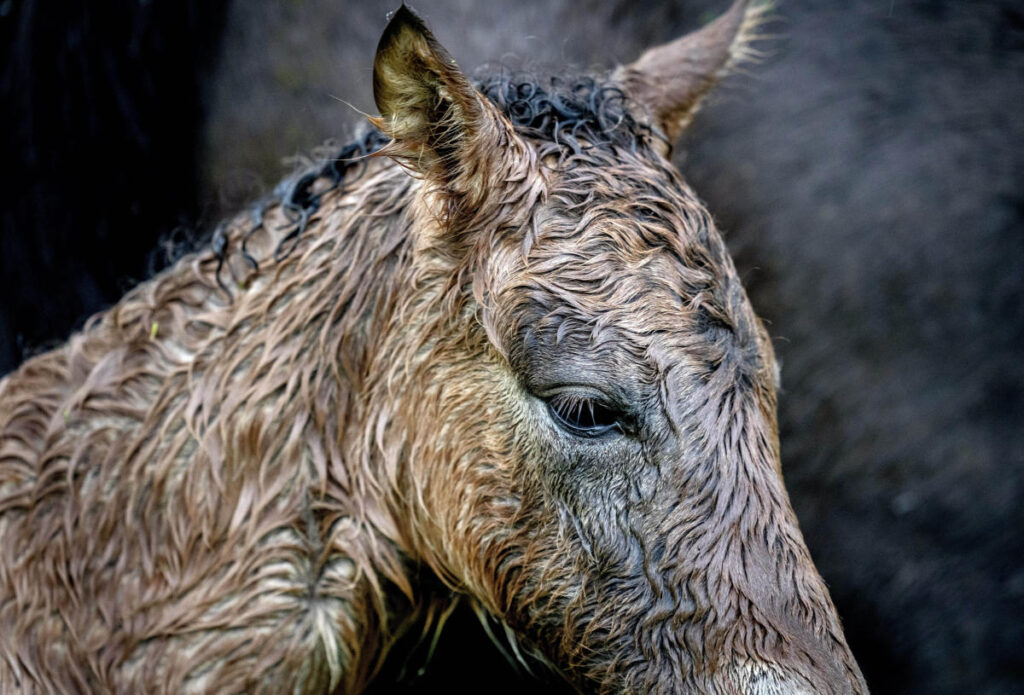As the sun slowly fades into daylight or fades into night, AP photographer Michael Probst often seeks out serene scenes near his home in Frankfurt, Germany, that evoke a sense of wonder.
Nature comes to life in the vibrant yellow of a pollen-laden bee approaching a sunflower or a furry-headed gosling poking out of its mother’s plumage. Two toothy Icelandic horses with shaggy manes playfully nip at each other as their large eyes seem to be focused on the camera lens.
Probst, who has worked for The Associated Press for 30 years, focused on finding a different perspective on life once his three children were grown and he could work early in the morning or late at night, when the light is best.
“I thought there had to be more to news photography than just football, business and government press conferences,” Probst said. “With all the problems in the world, I wanted to show the good things.”
Some of the many photographs he takes outside of his regular assignments include: a wild boar leaping through a haze of tall grass; an agile hare turning its tail and bounding away; and a stork leaping from its nest with wings spread wide.
Although his photographs of the environment feature wild animals, people are never far away.
A bee lands on a blood-red poppy with skyscrapers in the distance. A closer look at the fields under a hazy amber mist at sunrise reveals a commuter train. A drone shot reveals a heart-shaped pond hidden by a row of trees from cars speeding past on the highway next door.
It can take hours for Probst to get the right shot, and there are other challenges involved, such as getting permission from farmers and landowners to enter private land.
Probst aims to get up at 4:30 a.m. in the summer to photograph the sunrise. In the winter, he tolerates cold as low as minus 20 degrees Celsius (minus 4 degrees Fahrenheit).
Whether a photo is good or not depends on personal preference, he says.
“I’ve never thought about why pictures work,” he said. “I like a picture or I don’t like it, without being able to explain why. I trust my taste.”







